Wiyeonjae Hanok Stay [Korea Quality] / 위연재 [한국관광 품질인증/Korea Quality]
1.5Km 2021-03-29
7, Jjoksaem-gil, Gyeongju-si, Gyeongsangbuk-do
This hanok (traditional Korean house) is located very near to Cheomseongdae Observatory. Its location in front of the Gyeongju Historic Areas allows guests to reach major sights in Gyeongju like Daereungwon Ancient Tomb Complex, Donggung Palace and Wolji Pond, and Hwangnidan-gil Street by foot. This hanok symbolizes the historicity of the city of Gyeongju in that during its construction a female skeleton and accessories made out of precious metals were excavated from the site. The accommodation’s name comes from the idiom “Muwijayeon (leaving nature as it is),” combining bamboo and pine trees with green grass, show its dedication to ideals of rest and philosophy.
There are five rooms in total, all ondol (under-the-floor heating system) rooms for two. Korean paper lining the walls and old-fashioned furniture speak to the ideal beauty of hanok. The raised floor space, which is attached to the “Munmu” room, is a great place to enjoy the scenery and take pictures. All rooms have modern bathrooms with shower facilities, and a complimentary breakfast is served in the cafe on site from 8:00 to 9:00 in the morning. The complex has abundant parking spaces for the guests.
Alrededores del Parque Daereungwon de Gyeongju (경주 대릉원 일원)
1.5Km 2025-04-25
Hyerim-ro 9, Gyeongju-si, Gyeongsangbuk-do
Los Alrededores del Parque Daereungwon de Gyeongju consta de cinco tumbas: las de Nodong-ri, Noseo-ri, Hwangnam-ri, Hwango-ri e Inwang-ri. Las tumbas se distribuyen en el barrio de Hwangnam-dong de la ciudad de Gyeongju y se ubican en las inmediaciones de Daereungwon. Dentro de Daereungwon se encuentra la Tumba Cheonmachong, excavada en 1973. Otra tumba a destacar es Hwangnamdaechong, excavada entre 1973 y 1975, las cuales son tumbas gemelas.
Gyeongju Ssambap Street (경주 쌈밥거리)
1.5Km 2025-03-19
9 Gyerim-ro, Gyeongju-si, Gyeongsangbuk-do
Huewon (경주휴원)
1.6Km 2025-06-04
154, Chunghyoseoak-gil, Gyeongju-si, Gyeongsangbuk-do
Gyeongju Soohojeong (경주수호정)
1.6Km 2025-07-24
15-15, Poseok-ro 1068beon-gil, Gyeongju-si, Gyeongsangbuk-do
Suhojeong hanok guesthouse stands right in front of the Daereungwon Silla tombs, in Gyeongju, Gyeongsangbuk-do. The house is constructed of traditional materials - pinewood, red clay and straw - and each guestroom has a bathroom with toilet. In the spacious yard is a stone table where visitors can rest and chat. Transport links are excellent, with Gyeongju Station and Intercity Bus Terminal just 5 minutes away on foot. Nearby tourist attractions include Cheomseongdae, Banwol Fort, and Anapji Pond.
Nadul Hanok [Korea Quality] / 나들한옥 [한국관광 품질인증]
1.7Km 2020-09-09
4-1, Jjoksaem-gil, Gyeongju-si, Gyeongsangbuk-do
+82-54-777-7738
Nadeul Hanok was opened in 2018 with brand-new facilities, in a location just a minute’s walk from Cheomseongdae Observatory in Gyeongju. You can feel a sense of healing in nature in the traditional style house, built in environment-friendly construction method with wood and earth. The ‘ㄷ’-shaped building creates a snug atmosphere and the hipped-and-gable roof and the curves of the roof tile show the traditional quiet and still flavor of a traditional Korean house. There are 7 rooms in Nadeul Hanok. Among them, the Garam, Gayeon, and Nuri Rooms are offered at 50,000 won for 2 persons during off-season so that visitors can enjoy staying in a traditional Korean house at more affordable prices. All rooms are equipped with a bathroom for better convenience and there is an individual thermostat all year round. Complimentary breakfast made of healthy convenience food is offered to all guests. The menu is composed of barley bread, fruit, coffee, juice, boiled egg, and biscuit, and is subject to change according to situation. What is good is that the breakfast can be delivered to the room if the delivery time is requested during breakfast time, which is from 8 to 9 AM.
It is possible to look around the tourist attractions near Nadeul Hanok on foot. In addition, there are CVs, fast food shops, bike rental shops, and hanbok rental shops adjacent to Nadeul Hanok, enabling a more convenient and joyful tour.
Seokbinggo en Gyeongju (경주 석빙고)
1.7Km 2023-02-20
Inwang-dong, Gyeongju-si, Gyeongsangbuk-do.
Seokbinggo significa "congelador hecho en las rocas". Es un refrigerador antiguo de Corea, único en el mundo, y está situado en Gyeongju, la antigua capital del reino de Silla (57 a.C.-935). La apariencia externa de esta maravilla es sumamente humilde y simple. Sin embargo, no se sentirá defraudado una vez se haya asomado a la entrada de este congelador, pues sentirá el frío proveniente del interior de la estructura rocosa. La mitad de Seokbinggo se encuentra en el subsuelo mientras que la otra mitad está por encima del nivel del suelo, demostrando la propensión científica de la gente de Silla. Su piso, paredes y techo están hechas de granito y tiene una entrada de aire. Las paredes están cubiertas de cal para impedir el paso de la humedad y agua. El piso está inclinado para permitir que el hielo derretido fluya fuera de la cabina. Como material aislante, se usó la paja, cuyo poder aislante es altamente eficaz según experimentos realizados por científicos de la actualidad. El hielo conservado en este congelador era una de las delicias preferidas de la clase noble. En los anales históricos se hallaron registros sobre este Seokbinggo y se tienen pruebas de que fue construido, al menos, hace 1.500 años.
REVERTAIN HOTEL GYEONGJU[Korea Quality] / 리버틴호텔 경주[한국관광 품질인증]
1.7Km 2020-12-12
23, Taejong-ro 685 beon-gil, Gyeongju-si, Gyeongsangbuk-do
+82-54-620-8988
Rivertain Hotel Gyeongju is a business hotel that is distinguished by its convenient access and practical facilities, as it is located only 5 min away from Gyeongju Intercity Bus Terminal and 10 min away by foot to Hwanglidangil Street and Daereungwon Ancient Tomb Complex, Cheomseongdae Observatory, Donggung Palace, and Wolji Pond. Gyeongju World Culture Expo Park is also just a 20 min drive away. There are various room types offered, ranging from Standard to Twin, Triple, Suite, Suite Terrace, and Barrier-free. All rooms are furnished with a gray and brown-toned interior for comfort and equipped with premium mattresses, plush handmade goose down bedding, and stylers. In addition to work desks, the rooms are also furnished with a tea table and sofa for conventional tourists as well as business clients. Moreover, Rivertain Hotel Gyeongju is notable for having a full Barrier-free room for unobstructed travel. On-site facilities include a restaurant and a café, where guests can enjoy a 30% discount on coffee. The breakfast table is the hotel’s other source of pride, put together with care and mastery. It is a Korean buffet spread full of delectable dishes, as well as bread, yogurt, fruits, and breakfast cereal.
Solar del Palacio Wolseong de Gyeongju (경주 월성(반월성))
1.7Km 2023-01-16
Inwang-dong, Gyeongju-si, Gyeongsangbuk-do.
Este fue el lugar de la fortaleza del palacio durante la dinastía Silla (57 a.C. - 935). El nombre de la fortaleza significa literalmente 'luna creciente encima del monte'.
Los famosos libros de Samgukyusa dicen que el cuarto rey de Silla, Seoktalhae (57 a 80) pensaba que esta área era ideal para la fortaleza y compró la tierra a un noble. El segundo rey Namhae (4 a 24), impresionado por la acción de Seoktalhae, lo acogió como hijo más tarde, convirtiéndolo en el cuarto rey. La zona estuvo entonces bajo mandato de Silla por 900 años, siendo el último rey, Gyeongsun (927 a 935). A pesar de la magnífica grandeza del palacio, ahora es solo un terreno baldío, y según dicen estaba llena de edificios imperiales de la dinastía Silla.
En la actualidad, la zona de Wolseong tiene un congelador hecho de rocas llamado Seokbinggo, un lugar para arquería, un campo de carreras de caballo y un parque infantil, que se asemeja a los terrenos del período Joseon (la dinastía que gobernó en la península coreana desde 1392 a 1910).
Tumba Geumgwanchong (금관총)
1.7Km 2021-05-18
Noseo-dong, Gyeongju-si, Gyeongsangbuk-do
Geumgwanchong se ubica en Noseo-dong, Gwangju, y es una tumba de la dinastía de Silla (a.C 57 a d.C 935). Es una de las tres tumbas del centro de Gwangju que pertenece al distrito de Noseo-dong. No se conoce con certeza, pero se cree que la tumba Geumgwanchon pertenece al cuerpo de un rey anterior o posterior al rey Ji-Jeung a principios del siglo VI. Fue descubierta en septiembre de 1921 cuando el se estaban allanando las tierras para expandir la superficie. La primera reliquia que se encontró en esta tumba es una corona de oro (que en coreano se dice “geumgwan”), que le dio su nombre. También se econtraron en esta tumba ornamentos como cintos de oro, aros, pulseras, accesorios y vajilla de la época de los Tres Reinos (cuando Goguryeo, Baekje, y Silla se separaron para luego unificarse en Silla en 676 d.C). Se encontraron numerosas reliquias, más de 30.000 solo contando los accesorios. La estructura original de Geumgwanchong era de 13 metros de alto y 50 metros de diámetro. Las reliquias de esta tumba fueron transferidas y se preservan en el Museo Nacional de Gyeongju.
![Wiyeonjae Hanok Stay [Korea Quality] / 위연재 [한국관광 품질인증/Korea Quality]](http://tong.visitkorea.or.kr/cms/resource/51/2708951_image2_1.jpg)
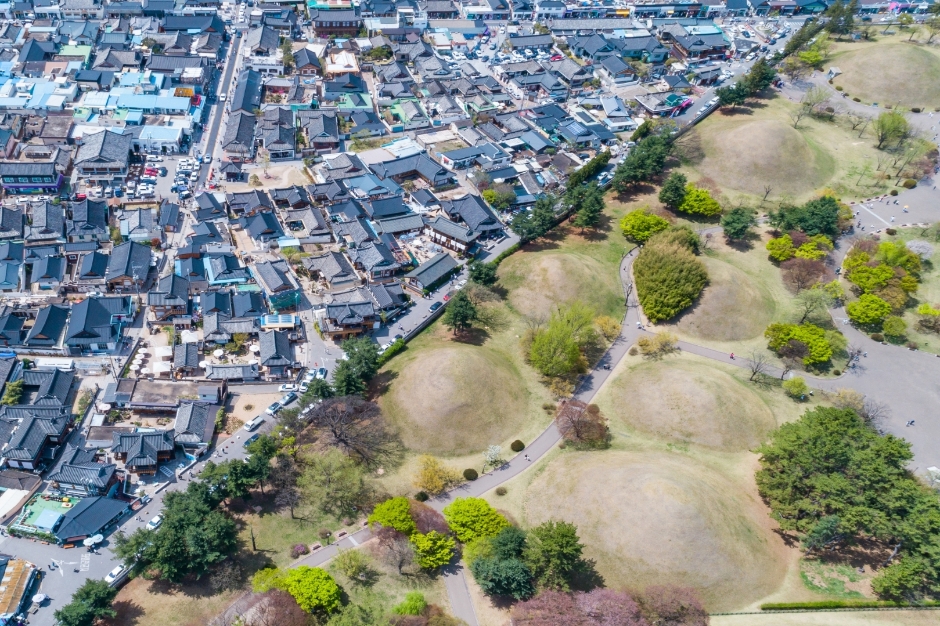
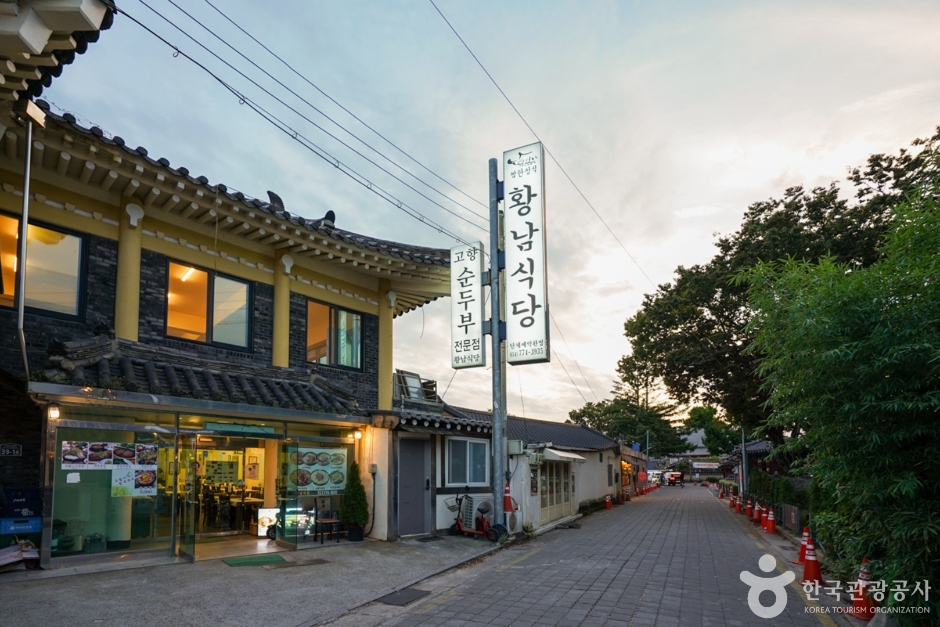
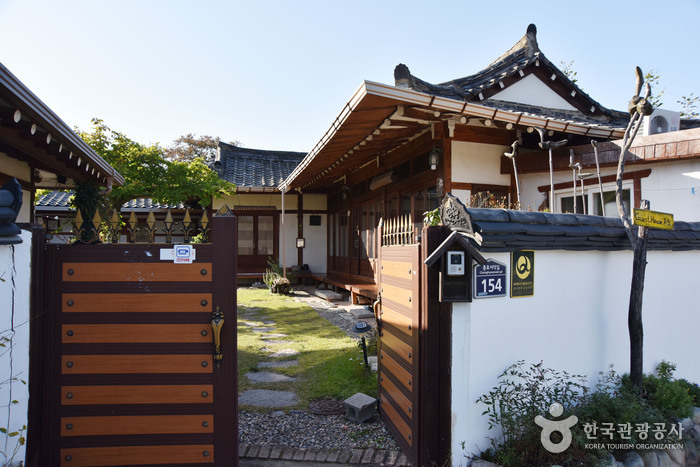
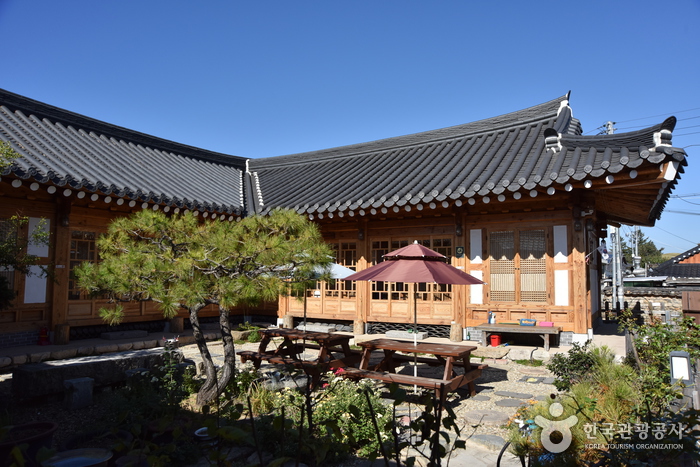
![Nadul Hanok [Korea Quality] / 나들한옥 [한국관광 품질인증]](http://tong.visitkorea.or.kr/cms/resource/86/2636486_image2_1.jpg)
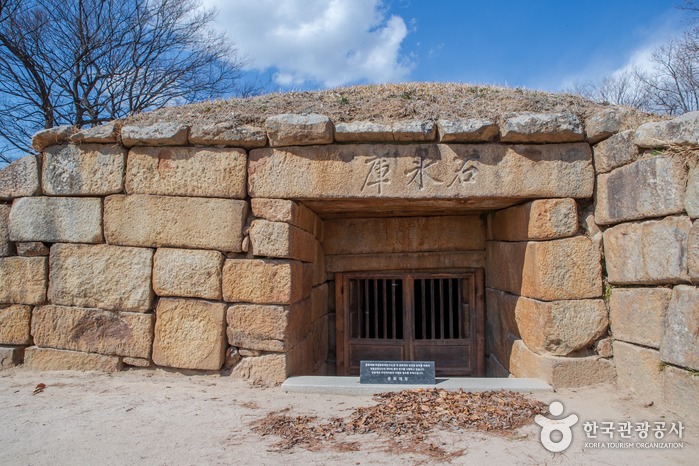
![REVERTAIN HOTEL GYEONGJU[Korea Quality] / 리버틴호텔 경주[한국관광 품질인증]](http://tong.visitkorea.or.kr/cms/resource/41/2652441_image2_1.jpg)
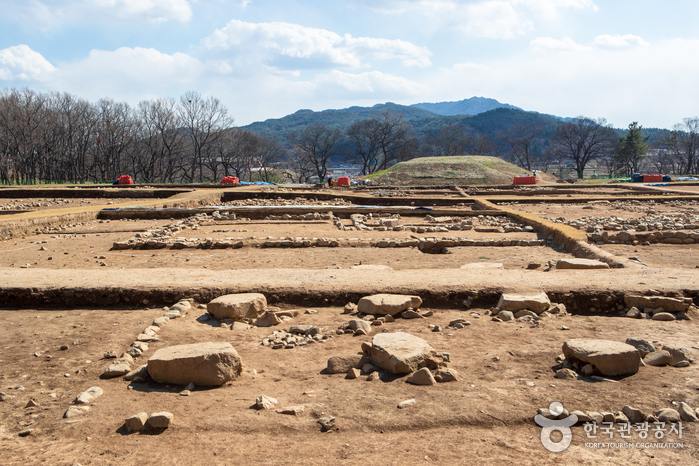
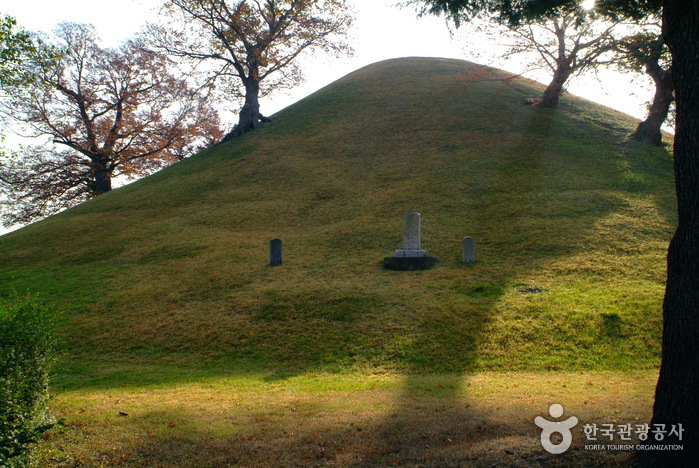
 Español
Español
 한국어
한국어 English
English 日本語
日本語 中文(简体)
中文(简体) Deutsch
Deutsch Français
Français Русский
Русский